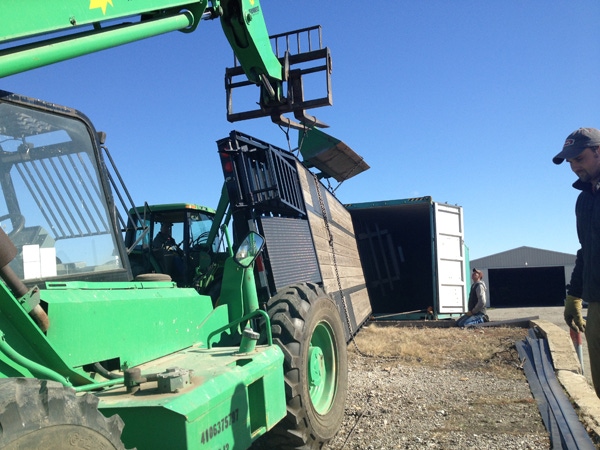November 26, 2012

Starting a farm in Africa has its challenges. One is sourcing agricultural equipment. In Ghana, you never really know what you are going to get. When we first started the farm, I needed a disk to clear and rip 60 acres. I looked all over for a disk but could only find a poorly made 5-ft. disk for $2,000. However, since I lacked alternatives, we bought the disk and ran it over about 60 acres. When we finished it was almost completely worn out.
I came back to Illinois in October to source equipment for our farm in Ghana. People sometimes ask me, �“Are you making progress?” I reflect on harvesting 40 acres by hand. It took us about 20 days with 20 people working each day.
I’ve now been able to source a combine for a Ghanaian neighbor who’s building a farm next to me. He is interested in making work easier; he has the money, but does not have experience operating the combine. We have decided to work together to make harvest easier for both of us. This will take our total harvest time on 40 acres to about three to four days because our limiting factor now will be drying capacity.
When buying machinery for Africa, you have to think about several things. First, I’m only farming about 100 acres, so I don’t need anything very big. I could buy an older combine, but then trying to source spare parts may become a problem, and repairing things on your own with no infrastructure is a challenge. I was looking at a 6620, but by the time I fix the things that were wrong with it, I could have bought a 9500 for the same price. I went with a 9500.
The next question is how will it get to Ghana? I’m making arrangements for the combine to travel by truck from central Illinois to Baltimore, where it will leave on a boat to Ghana. This maneuver will cost about half the price of the machine.
I took us two days to pack a container with smaller equipment: several gravity-flow wagons which we cut with a plasma cutter and will weld back together in Ghana; corn head to use with the combine; a flatbed gooseneck trailer and a hoop-style building to store. The biggest challenge was loading the 39-ft. gooseneck trailer into a 40-ft. container. We removed the wheels, tipped the trailer on its side and then pushed the trailer in with a telehandler. It sounds easy but it took us about five hours to get it inside the container and secured.
The container will travel from central Illinois to New York where it will be loaded onto a ship that takes it to a port in Europe, most likely Antwerp or Amsterdam. From Europe it will travel on a boat with several West African port stops, one of them being Tema, Ghana. I expect the journey to take about six to eight weeks. It takes a lot of planning and logistics to make everything work, but it is well worth it to help make farming easier in West Africa.
About the Author(s)
You May Also Like




